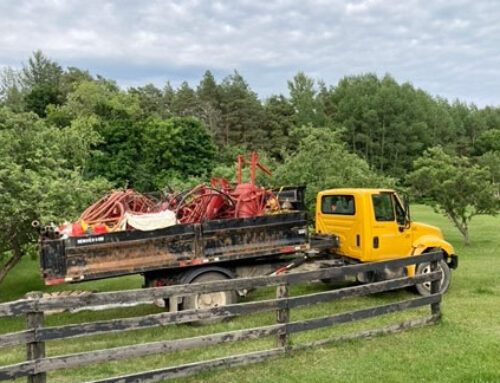The CFFM collection stands at the heart of the Museum. Developing and looking after it is a serious proposition. We are fortunate to have a core of members over the years dedicated to making sure we have one of the finest collections about fire fighting in Canada.
2023 was no different in the variety of tasks we undertook under the umbrella of the Museum’s Collection Committee. Broadly speaking they fell into projects to develop the collection and those to manage it properly. Developing the collection usually means identifying those gaps in the collection we would like to fill. We also respond to unsolicited offers of material from people wishing to dispose of records, family heirlooms and archives. Sometimes we get lucky and are offered items we need to complete records we already hold. But often we have to exercise good judgement and decline offers for a variety of reasons.
This year we were offered material to fill out our records of the Canadian fire fighters who served in Britain during the Second World War. We already had some of this material and now our holding is more extensive. It will help to tell an even more inclusive story about this little known Canadian wartime contribution than was possible in our original exhibition.
We were offered an extensive archive of a defunct American manufacturer of fire trucks. The archive was in Canada almost by accident resulting from a series of corporate mergers. Our conclusion was that there was really little Canadian content to the archive and that the responsible course of action for the owner was to donate it to an American fire heritage institution in the area where the manufacturer was located. We identified a potential recipient, made some initial enquires and put the two sides together. The archive was transferred over the summer and is now held by a museum that can make best use of its remarkable contents.
Other offers we simply have to decline outright. Often the items duplicate what we already hold, or they are of poor quality and would require extensive conservation. The availability of storage space looms large in this equation.
And we make reasoned decisions to dispose of artefacts that no longer fit our collecting mandate. This was the case in the summer of 2023 with a vehicle stored outdoors for many years. It was sold off by public auction after no collecting institutions showed any interest in accepting it.
But we sometimes are presented with opportunities that check many collecting boxes. This happened in 2023 when we took possession of a significant archival collection from a noted, recently deceased Canadian collector. It has taken several months to itemize the material and in doing so the significance of what we have acquired has slowly revealed itself. The gems include many technical documents over a century old from fire vehicle manufacturers. Research shows that these priceless documents exist almost nowhere else.
Also included are many Bills of Sale from one manufacturer who sold vehicles across Canada a century ago. To our great surprise, among them is the Bill of Sale for the 1914 vehicle donated to us by Ingenium. Taken together with material previously collected, this archive will be one of the best in Canada when we can house it properly.
From a collection management perspective, our largest challenge was the move of the collection from the “Hub” at Canton, ON where it had been housed since 2018. We were fortunate to be able to store some of the larger, weather resistant material in barns with the vehicles. The balance found a new home on John Street in Port Hope. After a concerted effort to organize things into coherent groupings at the “Hub”, nine stalwarts moved the balance of the collection in a long day in July.
Another small victory was that after some trials and tribulations we were able to get our 1941 GMC parade truck back on the road. It has quickly been well used to expose the Museum locally, including pride of place at the Antique Sale held in October. The sale also featured a selection of artefacts for hands-on inspection. Hands-down winner for public interest was the fragment of early 19th century wooden water pipe from Montreal.
The collection makes all of this possible. It is fascinating, evocative and conveys real meaning. It deserves to be carefully developed and managed to ensure its continued relevance for decades to come.
Christopher Terry
Chair, Collection Committee

The Canadian Fire Fighters Museum has an extensive collection of photos, albums and artefacts from the Corps. The photo above shows a portion.


Leave A Comment
You must be logged in to post a comment.